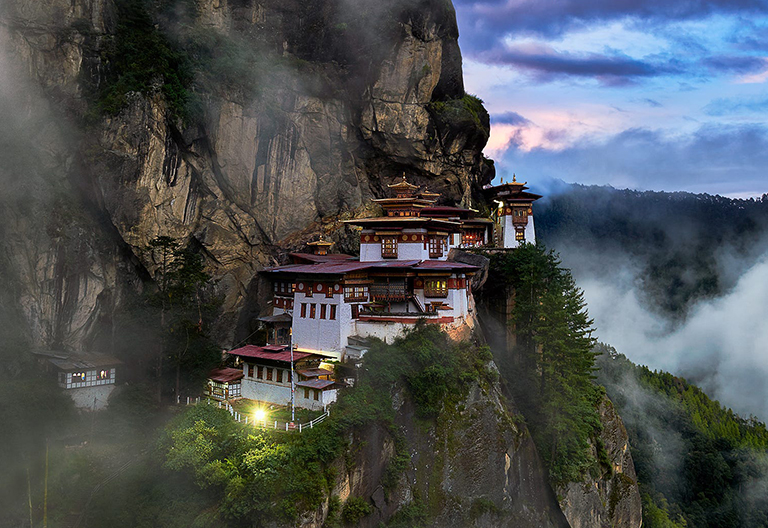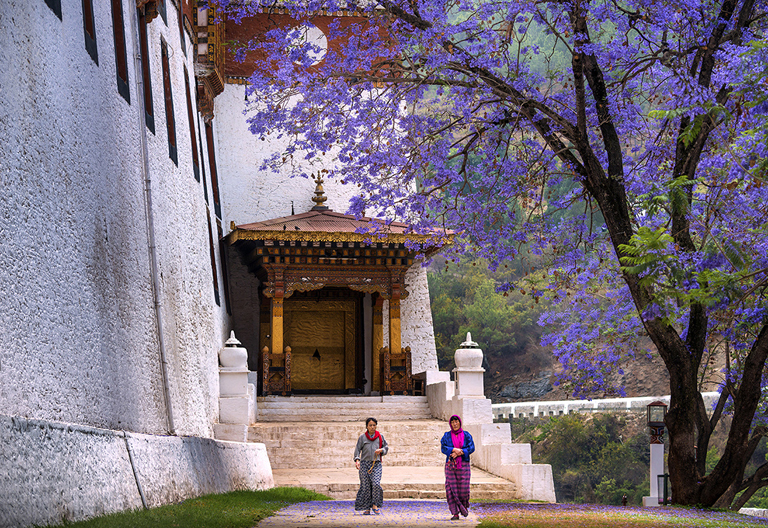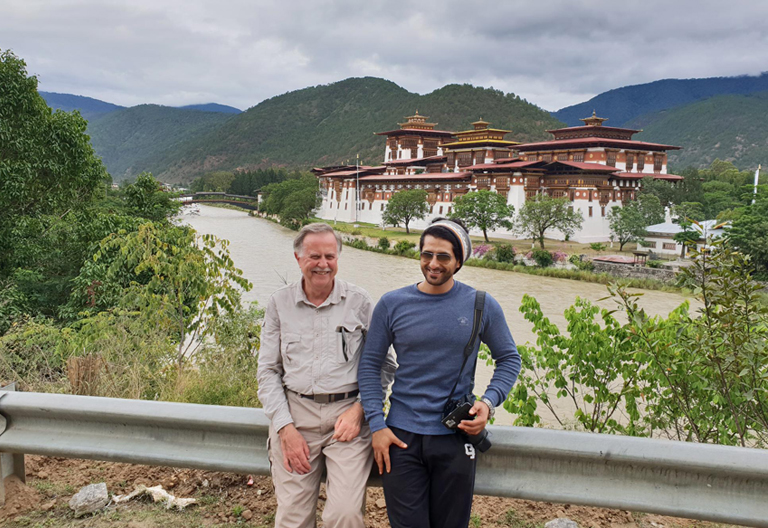
Bumthang - Sightseeing, Traffic, Weather, Hotels, Maps
Located in central Bhutan, Bumthang consists of 4 valleys: Chokhor, Tang, Ura and Chhume. As Chokhor covers a large area, it is also popularly called Bumthang Valley. There are two versions about the origin of the name “Bumthang”. One is that the valley shapes like “bumpa” - a religious container for holy water and “thang” means “plain”. Another explanation, which is also a less serious one, says that the name represents the beautiful girls living here because “bum” means “girls”.
Bumthang - Religious Heartland of Bhutan
Bumthang District is one of the 20 dzongkhag of Bhutan and it’s the most historic one with many of the oldest monasteries and religious sites in this nation such as Jambey Lhakhang and Kurjey Lhakhang. The story of Padmasambhava is spread all over the district. Here you can have a deeper feeling of the essence of Tibetan Buddhism in Bhutan and appreciate the local unsophisticated folkways. The fertile Bumthang is a land of buckwheat, rice and potatoes; apple orchards and dairy farms are also common here.
Top Places to Visit in Bumthang
As the cradle of Bhutan’s religion, there are many important monasteries and shrines in Bumthang. Many of them are related to Guru Padmasambhava and the tertons (“religious treasure-discoverers”), thus are of great importance to local people. There are occasional celebration activities held in the temples. It is definitely something you can not miss.
-

-
Jakar Dzong
Type: Historic Site, Dzong
Recommended Length of Visit: 1~2 hours
Legend has it that during site selection in 1549, a giant white bird surged into the sky and landed on a little ridge, which was considered as an auspicious omen. So Jakar Dzong was built here overlooking Chokhor Valley and the name means “The Castle of White Bird”. The perimeter of the Dzong is over 1500m and there is a half-round watchtower. It plays an important role as the fortress and the seat of the first king of Bhutan. A special feature of the Dzong is the utse (central tower) which is built on the exterior wall. Jakar Dzong is now half temple and half the administrative office.
-

-
Wangdichholing Palace
Type: Historic Site, Palace
Recommended Length of Visit: 1~2 hours
Wangdichholing Palace was built in 1857 as a former battle camp of Trongsa Penlop Jigme Namgyel. It is the first palace that is not designed like a fortress in Bhutan. The first king of Bhutan - Ugyen Wangchuck was born here. It was also the residence of the third king. Then in 1952, the king moved the whole royal family to Punakha. This grand palace is a landmark of Bumthang but hasn’t received enough attention and is now a lobdra (monastery school). There are apple orchards and quiet farmyards on the surrounding hills. Bhutan Foundation plans to renovate and transform it into a museum.
-

-
Jampey Lhakhang
Type: Religious Site, Monastery
Recommended Length of Visit: 1~2 hours
It is said that Jampey Lhakhang was built in 659 by Tibetan King Srongtsen Gampo on the same day of Kyichu Lhakhang in Paro to suppress an evil ogress. Padmasambhava visited this temple one day and saved the life of Sindhu Raja. There are 3 stone stairs in the temple representing the past, present and future. Locals believe that when the “present stair” sinks lower than the ground, it would be the end of the world. Inside the temple along the kora path are exquisite and colorful murals. In Oct. or Nov, one of the most magnificent festivals - Jampey Lhakhang Drup is held here.
-

-
Membartsho - Burning Lake
Type: Religious Site, Nature
Recommended Length of Visit: 1~2 hours
Membartsho is in Tang Valley, the most remote valley in Bumthang. It is where 27-year-old Pema Lingpa found several of Guru Rinpoche's treasures in late 15th century, so Membartsho is considered as one of the most sacred sites here. This place is a combination of nature, religion and mythology. A wooden bridge hangs over the valley covered with bright prayer flags and here offers a good view of the lake from above. A small altar dedicated to Terton Pema Lingpa has been set up nearby. On auspicious days, Bhutanese will come here and offer butter lamps at the lake.
-

-
Kurjey Lhakhang
Type: Religion & Culture
Length of Hiking: 1~2 hours
Kurjey Lhakhang, named after the body (kur) print (jey) of Padmasambhava, is next to Jampey Lhakhang. The print is preserved inside the oldest cave of the three buildings that comprise Kurjey Lhakhang. Among the three, Guru Lhakhang is the most ancient one built in 1652. The sanctuary on the upper-floor is the holiest with about 1000 small statues of Padmasambhava as well as Pema Lingpa and Drolma (Tara). The second one is Sampa Lhundrup Lhakhang built by the first king of Bhutan in 1900 and the third one is in 1984 by the third queen of Bhutan.
-

-
Bumthang Festivals
Type: Religion & Culture
Date: February, October, November...
There are many festivals in Bumthang, among which the most important one is Jampey Lhakhang Drup usually held in October or November. Apart from the cham, it is famous for the mewang (fire blessing ceremony) and tercham (dance of treasures performed by naked males around a bonfire). The 3-day Jakar Tsechu is about a week before that, also a religious festival with mask dances. Another special festival is Nomad’s Festival held in the third weekend in February in Nangsiphel. There will be a series of sports such as archery, wrestling, and tug-of-war and local people will sell specialties like buckwheat and cheese.
How to Get to Bumthang
-
Bumthang is in central Bhutan. It is connected with other parts of Bhutan by road and there are domestic flights to Paro and Trashigang. For foreign tourists, the most chosen gateway to Bhutan is Paro because it has the only international airport in this country. Then you can take a car or plane to Bumthang from Paro.
Paro to Bumthang - Paro is about 320 km (9 hours’ drive) to the west of Bumthang. It is more recommended to take a road trip because it is more flexible and you can take your time enjoying the view on the way. In this journey, you will pass Thimphu (capital of Bhutan), Punakha, Wangdue Phodrang, Phobjikha Valley and Trongsa to encounter the museums, temples, valleys, etc. If you do want a faster trip, you can take a flight from Paro to Bathpalathang Airport, which is only about 40 min, but extra fee will be needed and the schedule is uncertain.
Best Time to Visit Bumthang
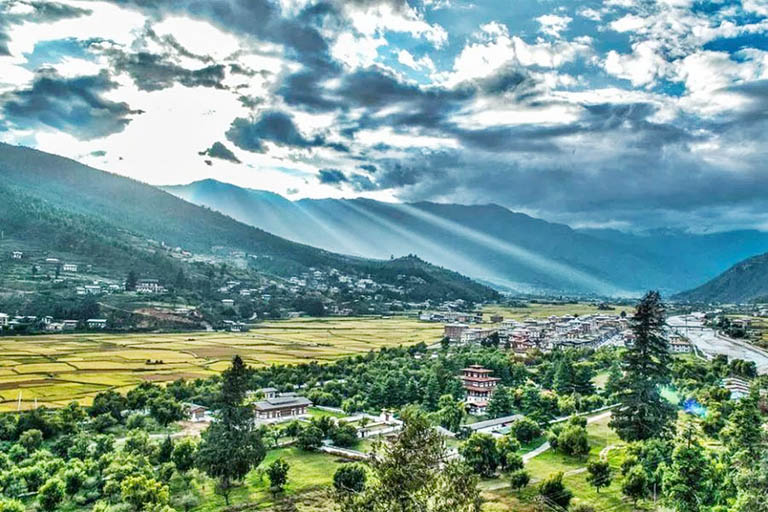
-
With an altitude of about 2800m, Bumthang is usually mild and in good weather except for the rainy summer (June to August) and some chilly days in winter. Generally speaking, the best time to visit Bumthang is from March to May and September to November. Though Bumthang covers a large area, major attractions gather near Jakar. Take historical weather data of Jakar for example, the temperature varies from 24°F (-4.5℃) to 66°F (18.9℃) and is rarely below 18°F (-7.8℃) or above 70°F (21.1℃).
Most days are cool and clear in spring and autumn. What’s more, many festivals are held in October or November so you can have a deeper understanding of local culture besides the nature. Summer is always rainy or cloudy, which is not recommended to go. Winter is cold and dry, but you will have a chance to see the snow scape.
Where to Stay - Hotels in Bumthang
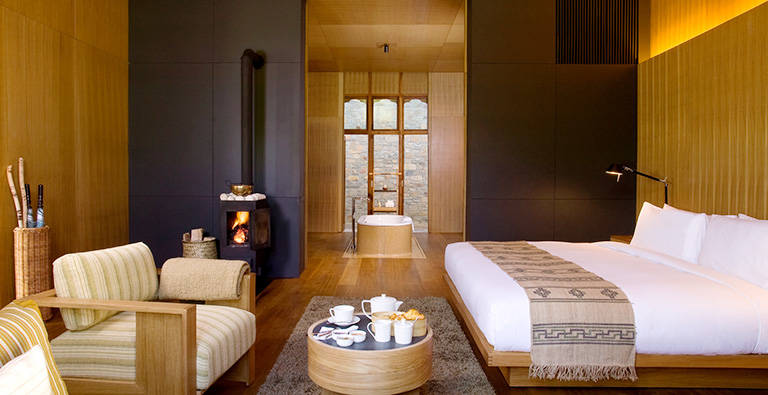
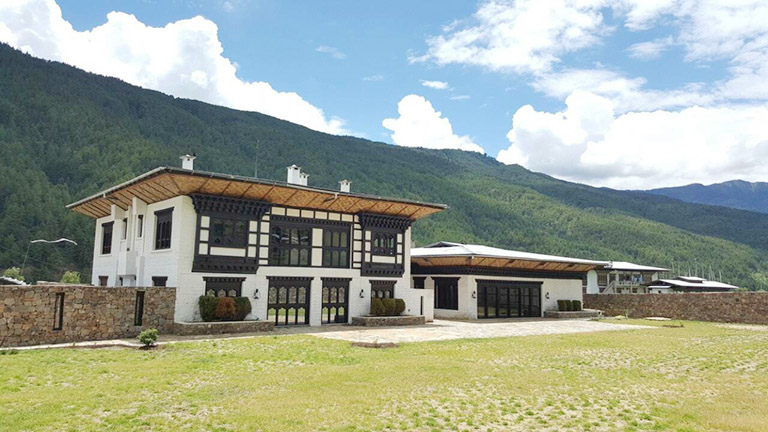
-
Most Bumthang guesthouses are designed in a traditional Bhutanese way with pine-clad rooms and separate dining halls. In recent years, many grand hotels are opened here to provide more luxury services to the tourists. Please kindly note that all the hotels receiving foreign guests need to be approved by the government and the accommodation fee of a 3-star hotel is already covered in your daily minimum cost in Bhutan (USD 250 per person per night in March, April, May, September, October, and November, and USD 200 per person per night in other months). If you want to upgrade your accommodation to a 4 or 5-star hotel, an extra fee may be required.
Aman Kora is the only 5-star hotel in Bumthang and is just 3 km from Wangdichholing Palace, enjoying favorable location and environment. It has large and immaculate rooms and the service is beyond your expectation. You can try the morning yoga and archery if you like. Apart from that, there are many cozy 3-star homestays and guesthouses for your choice such as Swiss Guest House, Chumey Nature resort, and Village Lodge. The staff is hospitable and your basic accommodation needs will be met.
Useful Bhutan Travel Notes
- 1. How to Get a Bhutan Visa
- Except Indians, Bangladeshis and Maldivians, all foreign tourists wishing to travel to Bhutan are required to obtain Bhutan Visa Clearance Letter prior to departure. It is a single-entry visa that can only be applied by licensed Bhutanese tour operator and their international partners. If you travel with us, you only need to send us a clear scanned copy of your passport for a minimum one week visa processing. Once issued, a Visa Clearance Letter will be emailed to you for taking flights to Bhutan. After arrival in Paro Airport, the immigration officer will stamp the Bhutan Visa on your passport after checking the Visa Clearance Letter. Then you can start the dream trip in the kingdom of Bhutan.
- 2. How to Plan a Bhutan Tour
- A classic Bhutan tour usually takes about 6 days involving Paro, Thimphu and Punakha. Apart from the arrival and departure days, you get 4 full days to explore the landmarks in Bhutan - three days in the towns of Paro, Thimphu and Punakha, and another day in Taktsang Monastery (Tiger’s Nest). If you want an in-depth tour to central Bhutan, you are suggested to spend extra 4 days to Bumthang via Wangdu Phodrang and Trongsa. Many travelers prefer an overland tour in Nepal, Tibet and Bhutan to discover the Himalaya Kingdoms. If time permits, you can take a one-hour flight from Bhutan to Nepal, where you can admire the medieval architectural wonders and marvelous landscape of Himalayan Peaks. After that, take an overland driving journey to the holy city Lhasa via Mount Everest, Tibet.
- 3. How to Get to Bhutan
- There are two choices to get to Bhutan – by international flights from connected Asian countries (Nepal, India, Thailand, Singapore and Bangladesh) and by overland driving from India. Since Paro is the only international airport, all the flights to Bhutan lands on Paro. Meanwhile, there are three accessible land ports connected Bhutan and India, including Phuentsholing, Samdrup Jongkhar and Gelephu. Phuentsholing is the primary one which connects Chhukha of Bhutan and West Bengal of India. From Phuentsholing, it takes about 6 hours to drive to Paro or Thimphu. The other two ports are located in central and eastern remote area of Bhutan.
- 4. Other Destinations in Bhutan
- Apart from Bumthang, there are many other destinations worthy of your visit, including Paro, Thimphu, Punakha, Phobjikha, Wangdue Phodrang, Trongsa, etc. With the only international airport, Paro is probably the first destination of your Bhutan trip. And it is also where the Taktsang Monastery - Landmark of Bhutan locates. As the capital city with natural and cultural glamour, Thimphu is a must-be-visited city in Bhutan. Its National Memorial Chorten is an important holy site. Besides, there are many interesting and significant museums and institutes to catch a view of Bhutan’s rich history and culture. Punakha has the most beautiful Dzong in Bhutan - Punakha Dzong. It looks surreal especially with the purple Jacaranda in blossom between April and June.
Most Recommended Bhutan Tour Packages
Following are some recommended Bhutan tour packages that you may be interested in. All tour packages are customizable to meet your personal requirements. You can also contact us to customize a trip if you want.
-

-

-

9 Days Bhutan In-depth Natural and Cultural Tour
Paro / Thimphu / Punakha / Phobjikha / Trongsa / Bumthang / Wangue Phodrang / Paro








